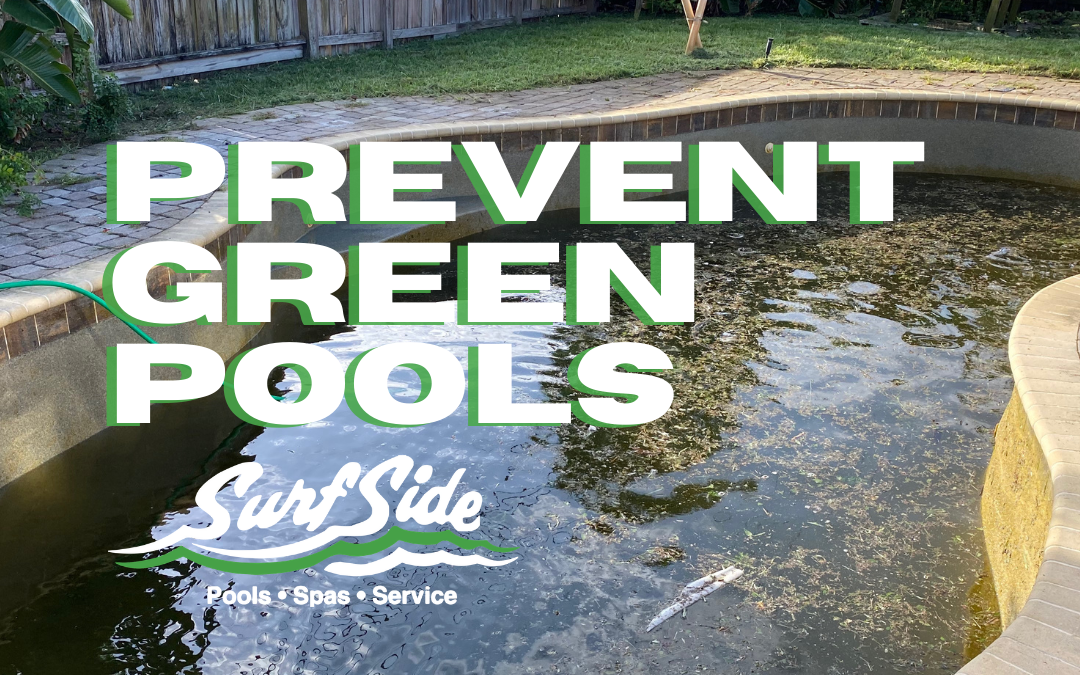With Spring and Summer around the corner, we’re all excited to get back to typical First Coast weather so we can Float Happy™. However, many pools go green in March. Because there are so many factors that lead to a green pool, a DIY solution is not the way to go.
You’ll waste time and money trying to remove the algae once it has been established. The best solution for a green pool is prevention. Hiring a reputable company to provide regular pool service before any algae appear will save you a lot of trouble.
Health Risks
While an algae bloom is treatable, DIY methods are not a good idea. Algae blooms don’t damage your pool, but can cause health problems if you swim in it. You might experience skin irritation, ear or eye infections, or even gastrointestinal upset.
Algae can bloom rapidly, even overnight, so prevention is important to avoid these health risks. Once an algae bloom occurs, you’ll have to avoid the water entirely until you can have the water treated and rebalanced. Prevention will save your time, money, and health.
Pollen
In March, many plants are starting to bloom. Spring is coming and so is pollen. Pollen and other plant debris introduce algae and other bacteria to your pool. Regular maintenance ensures that the pool has no large debris and keeps the pump filter working properly.
A DIY algae solution will not fix the underlying problem if you have pollen washing into your pool. Having a pool service check your equipment regularly in the warmer months will save you a lot of trouble.
Rain
Rain is another contributing factor to your green pool. A rainstorm introduces large amounts of untreated water that changes the pH of your pool. It can also wash in debris and plant matter. You can’t prevent rain but you can mitigate its impact on your pool. A pool company can advise you on what to do before a storm and provide service to restore the safety of your pool.
Warmer Temperatures
Algae typically does not grow in cold water. Water temperatures below 60 degrees prevent algae growth. Cold water also preserves the pool chemicals and prevents disturbance of your pool’s sanitation. In the spring, though, water temperatures can rise relatively quickly. Especially if you have several sunny days in a row, your pool can reach the algae-friendly temperature of 65 degrees long before you would consider swimming. At this temperature, the pool chemicals become active and will start to be used up. Combine that with a little rain or other contamination and you have a recipe for algae to bloom.
This is why you should have your pool service scheduled before you plan to open your pool. A good pool company will rebalance the pool chemicals, clean the filters, and make sure you don’t lift your pool cover to discover an emerald swamp.
DIY Dangers
It is tempting to think all you need is a pH test kit and a stock of pool chemicals to prevent or treat an algae bloom. However, when it comes to your health and safety, you want things done right. By the time you are ready to load up your favorite playlist, algae may have already established itself.
Even if you are familiar with basic pool maintenance, algae prevention is best left to professionals. In the spring, it will take larger amounts of pool chemicals to treat the same amount of water. This is because of contamination from debris and rainwater. Hiring a reputable company will give you a head start on any potential problems with your pool and get you swimming safely sooner.

